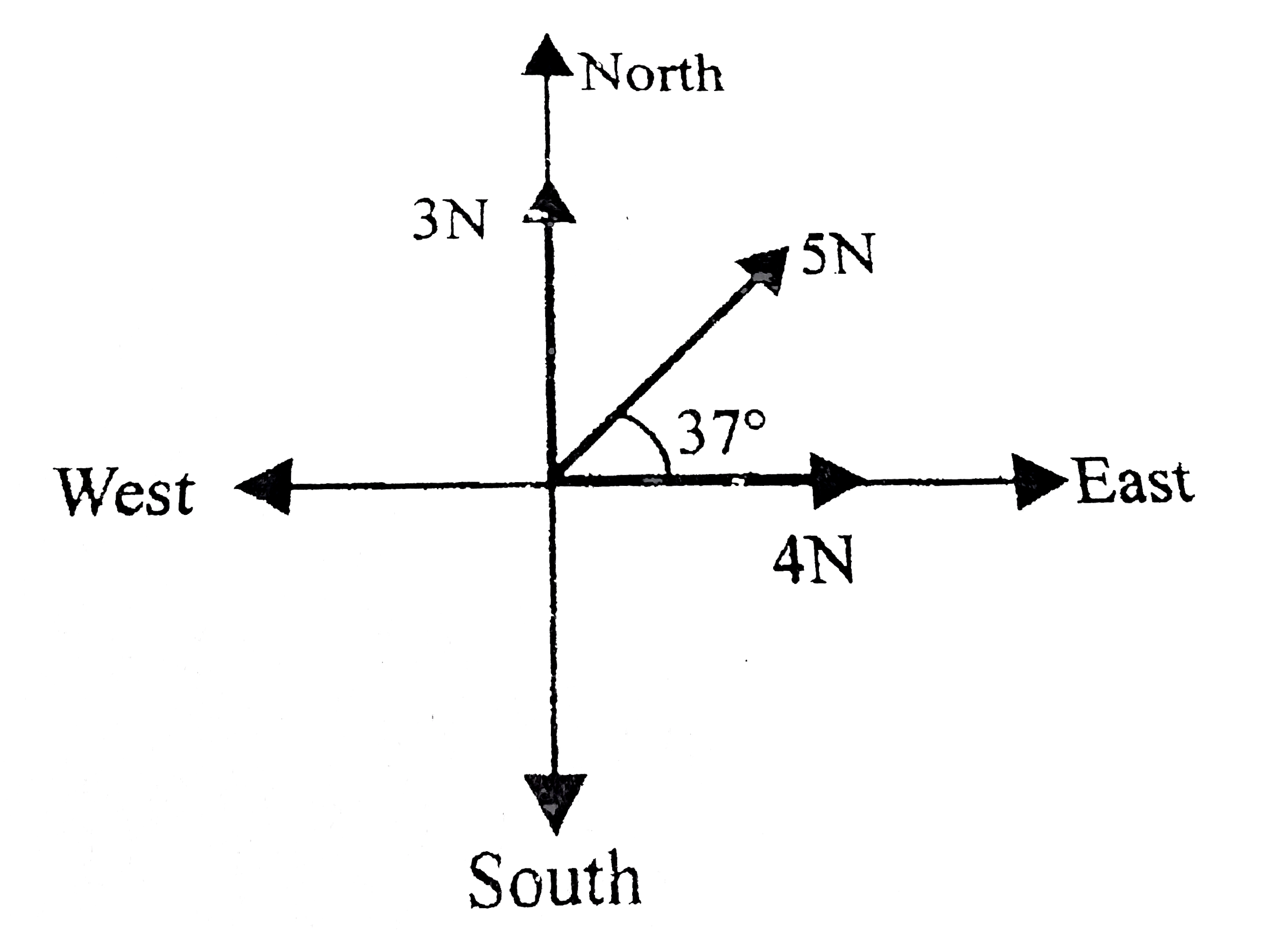The vector sum of the forces of 10 newton and 6 newton can be:
2N
8N
18N
20N
The correct Answer is:2
To find the vector sum of the forces of 10 Newton and 6 Newton, we can use the concept of vector addition. The resultant force can vary depending on the angle between the two forces. Here’s how to approach the problem step by step:
Step 1: Understand the Concept of Vector Addition
Vectors can be added using the triangle law of vector addition or the parallelogram law. The resultant vector depends on the magnitudes of the vectors and the angle between them.
Step 2: Identify the Forces
We have two forces:
- Force F1=10N
- Force F2=6N
Step 3: Calculate the Minimum Resultant
The minimum resultant occurs when the two forces are acting in opposite directions. In this case, the resultant Rmin can be calculated as:
Rmin=|F1−F2|=|10−6|=4N
Step 4: Calculate the Maximum Resultant
The maximum resultant occurs when the two forces are acting in the same direction. In this case, the resultant Rmax can be calculated as:
Rmax=F1+F2=10+6=16N
Step 5: Determine the Range of the Resultant
From the calculations above, we can conclude that the resultant force R can vary between the minimum and maximum values:
4N≤R≤16N
Conclusion
The vector sum of the forces of 10 Newton and 6 Newton can be any value between 4 Newton and 16 Newton, inclusive.
---
Vectors can be added using the triangle law of vector addition or the parallelogram law. The resultant vector depends on the magnitudes of the vectors and the angle between them.
We have two forces:
- Force F1=10N
- Force F2=6N
The minimum resultant occurs when the two forces are acting in opposite directions. In this case, the resultant Rmin can be calculated as:
Rmin=|F1−F2|=|10−6|=4N
The maximum resultant occurs when the two forces are acting in the same direction. In this case, the resultant Rmax can be calculated as:
Rmax=F1+F2=10+6=16N
From the calculations above, we can conclude that the resultant force R can vary between the minimum and maximum values:
4N≤R≤16N
The vector sum of the forces of 10 Newton and 6 Newton can be any value between 4 Newton and 16 Newton, inclusive.
Topper's Solved these Questions
- BASIC MATHEMATICS USED IN PHYSICS &VECTORS Book:ALLENChapter:BASIC MATHEMATICS USED IN PHYSICS &VECTORS Exercise:RESOLUTION OF VECTOR
Explore 8 Videos
- BASIC MATHEMATICS USED IN PHYSICS &VECTORS Book:ALLENChapter:BASIC MATHEMATICS USED IN PHYSICS &VECTORS Exercise:DOT PRODUCT
Explore 20 Videos
- BASIC MATHEMATICS USED IN PHYSICS &VECTORS Book:ALLENChapter:BASIC MATHEMATICS USED IN PHYSICS &VECTORS Exercise:DEFINITION & TYPES OF VECTOR
Explore 6 Videos
- CENTRE OF MASSBook:ALLENChapter:CENTRE OF MASSExercise:EXERCISE-V B
Explore 19 Videos
Similar Questions
Knowledge Check
Two forces of magentude 7 newton and 5 newton act on a particle at an angle θ can have any value . The minimum magnitude of the resultant forces is :
A5 newtonB8 newtonC12 newtonD2 newtonIn the following options you are given the magnitudes of three forces in newton acting simultaneously on a body. Fint the set for which the resultant force on the body can be zero
A10,8,2B15,30,14C40,19,17D10,20,35P' and 'Q' horizontally push in the same direaction a 1200kg crate. 'P' pushes with force of 500 newton 'Q' pushes with a force of 300 newton If a frictional force provides 200 newton of resistance what is the acceleration of the crate. ?
A1.3m/s2B1.0m/s2C0.75m/s2D0.5m/s2
For shown situation, what will be the magnitude of minimum force in newton that can be applied in any direction so that the resultant force is along east direction?

View SolutionA lever has a mechanical advantage of 10. What load in newtons, can be moved by an effort of 6 newtons.
View SolutionDefinition of force comes from Newton 's -
View SolutionTwo concurrent forces are of magnitudes (P+Q) newtons and (P-Q) newtons. Then angle between their line of acting is 135∘, and their resultant is a force of 2 newtons, perpendicular to the line of action of the second force. Then the values of P and Q are respectively.
View SolutionAn external force of 10 newton acts normally on a square area of each side 50 cm. The stress produced in equilibrium state is
View Solution

